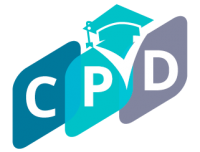Introduction:
In today’s multicultural and interconnected world, the importance of recognizing and embracing diversity in education has never been more critical. Culturally responsive pedagogy has emerged as a transformative approach that acknowledges the rich tapestry of cultural backgrounds within the classroom. This pedagogical philosophy seeks to create an inclusive and empowering learning environment for all students, irrespective of their cultural backgrounds. In this article, we will explore the profound impact of culturally responsive pedagogy on education and how it fosters a sense of belonging and understanding in diverse classrooms.
- Defining Culturally Responsive Pedagogy: A Framework for Inclusivity
Culturally responsive pedagogy is an educational approach that recognizes the cultural diversity of students and incorporates their cultural backgrounds into the learning process. It goes beyond traditional teaching methods to create an inclusive space where every student feels seen, heard, and valued. This approach acknowledges that culture influences how individuals learn, perceive the world, and interact with knowledge.
- Fostering a Sense of Belonging: Inclusive Learning Environments
One of the profound impacts of culturally responsive pedagogy is the creation of inclusive learning environments that foster a sense of belonging. By incorporating diverse cultural perspectives into the curriculum, educators validate the lived experiences of students from various backgrounds. This validation contributes to a positive classroom climate where all students feel accepted and valued, enhancing their overall sense of belonging.
- Cultural Competence: Nurturing Understanding and Respect
Culturally responsive pedagogy aims to develop cultural competence among students and educators alike. By exploring and understanding different cultural perspectives, students gain a more nuanced understanding of the world. This fosters empathy, respect, and an appreciation for diversity, equipping students with the skills to navigate and thrive in an increasingly globalized society.
- Personalized Learning: Recognizing Individual Strengths and Styles
Culturally responsive pedagogy recognizes that students bring unique strengths, learning styles, and ways of knowing shaped by their cultural backgrounds. Educators leverage this diversity to implement personalized learning strategies that accommodate individual needs. By recognizing and building on students’ strengths, culturally responsive pedagogy enhances the effectiveness of instruction and supports positive learning outcomes.
- Culturally Relevant Curriculum: Connecting Learning to Real-World Experiences
One of the key components of culturally responsive pedagogy is the development and incorporation of a culturally relevant curriculum. This involves selecting materials, examples, and activities that reflect the cultural backgrounds of students. A culturally relevant curriculum not only enhances engagement but also connects learning to real-world experiences, making education more meaningful and applicable to students’ lives.
- Language Inclusivity: Embracing Multilingualism
Culturally responsive pedagogy recognizes and values the linguistic diversity present in classrooms. Inclusivity extends to embracing multilingualism and incorporating students’ home languages into the learning process. This approach not only supports language development but also validates the linguistic assets that students bring to the classroom, contributing to a more inclusive and empowering educational experience.
- Cultural Awareness: Preparing Students for a Globalized World
In a world where interconnectedness is the norm, cultural awareness is a vital skill. Culturally responsive pedagogy prepares students for the globalized world by fostering an understanding of diverse cultures and perspectives. This awareness goes beyond tolerance, encouraging students to actively engage with and appreciate the richness that different cultures bring to the global community.
- Equity and Social Justice: Addressing Disparities in Education
Culturally responsive pedagogy aligns with a commitment to equity and social justice in education. By recognizing and addressing systemic inequities, educators employing this approach strive to create classrooms where every student has an equal opportunity to succeed. This focus on equity contributes to breaking down barriers to educational achievement and promoting a more just and equitable society.
Conclusion:
Culturally responsive pedagogy stands as a transformative force in education, influencing not only how students learn but also how they perceive themselves and others. By creating inclusive learning environments, fostering cultural competence, and embracing diversity, this pedagogical approach has a profound impact on students’ sense of belonging, understanding, and success. As educators continue to shape the future of education, the principles of culturally responsive pedagogy provide a guiding light toward creating classrooms that celebrate diversity, cultivate empathy, and prepare students to navigate a world rich in cultures and perspectives.
